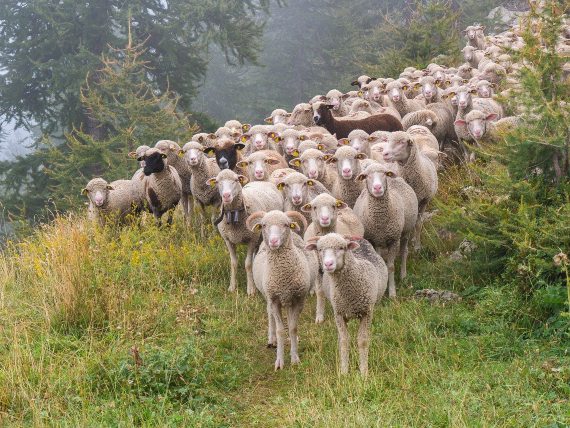Ever since the COVID-19 pandemic began to alter our lives in an unanticipated way, there has been an imaginary place where we want to reach to feel safe: immunity. Vaccines are on the way, but while we await their arrival an intense debate has been raging for months about herd immunity, the idea that once a certain proportion of the population has been infected the epidemic will die out on its own, reducing the likelihood that those still susceptible will come into contact with the virus. Some scientists have defended this goal; in fact, dozens of them have signed a declaration on the matter—harshly contested by others—and the concept motivates in a more or less surreptitious way the strategy of some countries, such as Sweden. However, many experts warn that not only would relying on herd immunity mean the loss of many lives, but also that this place is not really as often imagined, if it even exists at all.

The idea of herd immunity began to emerge in the livestock industry in the early 20th century. While farmers used to slaughter cattle affected by the “contagious abortion” infections that were then ravaging farms, in 1916 veterinarians George Potter and Adolph Eichhorn intuited that these animals could contribute to creating a “herd immunity,” similar to how a fire feeds on new fuel but does not expand onto already burned material. In 1923, British microbiologists William Topley and Graham Wilson were experimenting with herd immunity in mice, wondering whether it was preferable for the same total resistance to a pathogen in a population to be distributed so that a few individuals were 100% immune and others totally susceptible, or that all of them had some partial immunity.
Part of mass vaccination strategies
Topley and pathologist Sheldon Dudley soon exported the idea to the epidemics in classrooms and student residences. In the 1930s, herd immunity was discussed in the context of the infections of greatest concern at the time, such as polio, smallpox, influenza and measles. In the 1950s and 1960s, the concept entered the public health debate in reference to what percentage of the population needed to be vaccinated to achieve herd immunity. In the 1970s, the so-called Herd Immunity Threshold (HIT) was finally quantified by giving it a mathematical formulation; the estimated percentage of the population that needs to be immunised for an epidemic to begin to decline is 1 – 1/R0, with R0 being the basic reproduction number of the infection, or how many people on average each infected person infects at the beginning of an outbreak, when the entire population is susceptible and randomly mixed.

Since then, the contribution of herd immunity has been recognised in the ebbs and flows of childhood epidemics, and has been part of mass vaccination strategies, but not without debate. The most criticised point is that the term “herd” refers to the origin of this concept in livestock farming, where it is considered acceptable to sacrifice part of the group to protect the rest, and therefore should be used with extreme caution when applied to human populations. In any case, in reference to humans, herd immunity has only been used in relation to vaccinations; it had never been set as an objective to achieve by letting a virus run rampant. There is no historical precedent for this.
A stopping distance that could be very long
And yet, speculation about the possibility of achieving herd immunity to the SARS-CoV-2 coronavirus through natural infection has continued, although it has run into numerous uncertainties. Estimates of R0 estimated a HIT of about 60% to 70%, but serious questions remain even about the quality and duration of immunity in people who have overcome the infection. Some researchers argue that the percentage could decrease if complex variables are introduced; for example, not all individuals are equally susceptible or exposed to the same degree, and if the population not yet infected becomes more resistant, this could lower the threshold of immunity. Some studies have even reduced it to 40% or even 10%-20%, but other experts have questioned this.

But above all, and in addition to the fact that letting the virus run wild would result in an unacceptable number of deaths and sufferers with serious after-effects, it is often forgotten that even achieving actual herd immunity would not bring an abrupt halt to the infections, but would be a gentle brake that would bend the curve little by little until a final extinction of the pandemic in the future. And the stopping distance could be very long; one epidemiological model calculated that, with a HIT of 66%, the epidemic would only stop completely once 94% of the population was infected. “The view that the epidemic is essentially over once the herd immunity point is reached is erroneous,” the researchers wrote. In other words, herd immunity would in practice serve to protect only a privileged 6% of the population. Herd immunity, yes, but only through a vaccine.
Comments on this publication